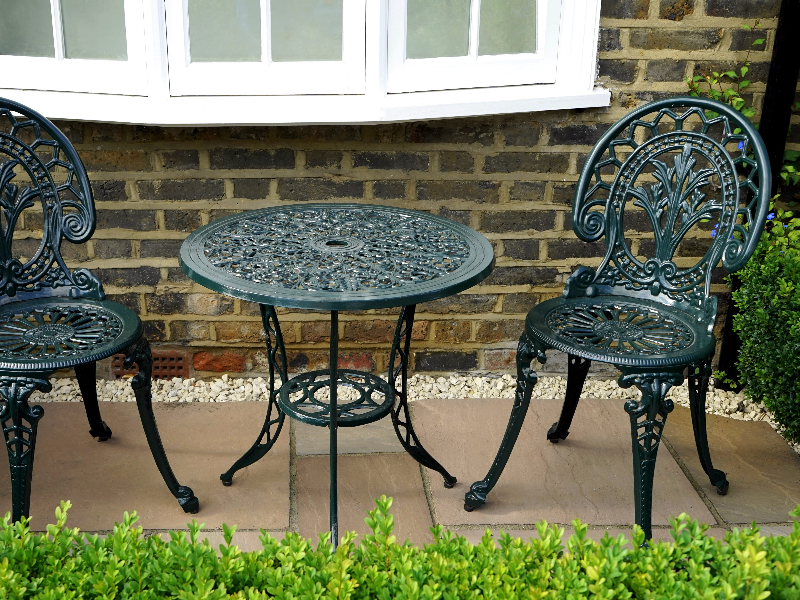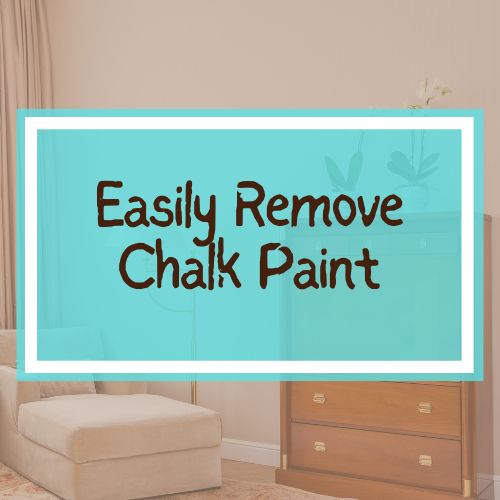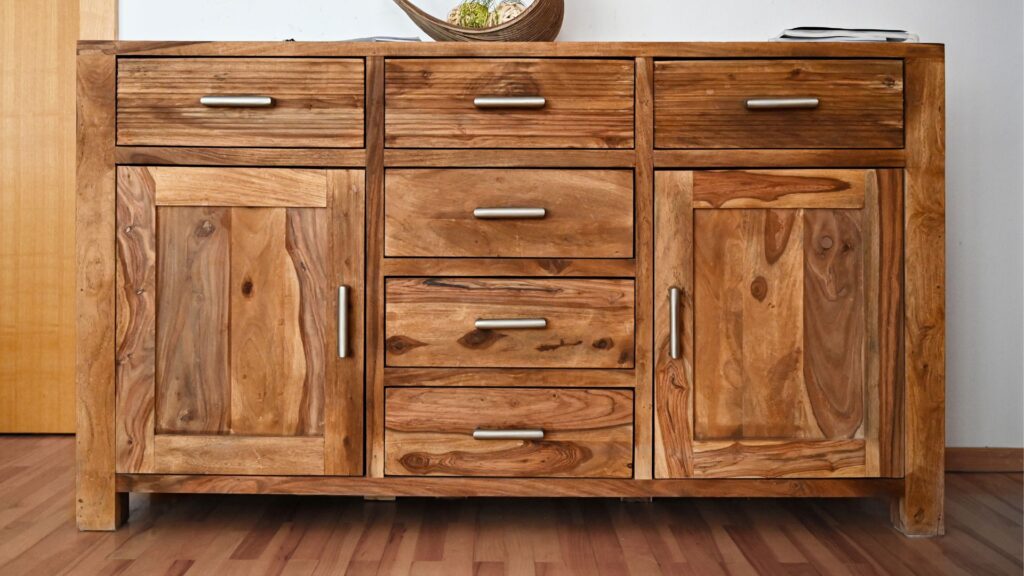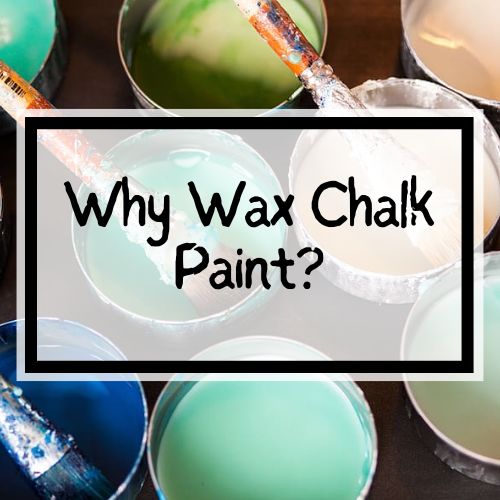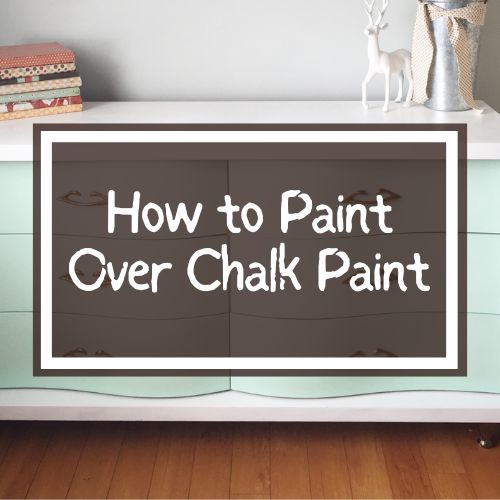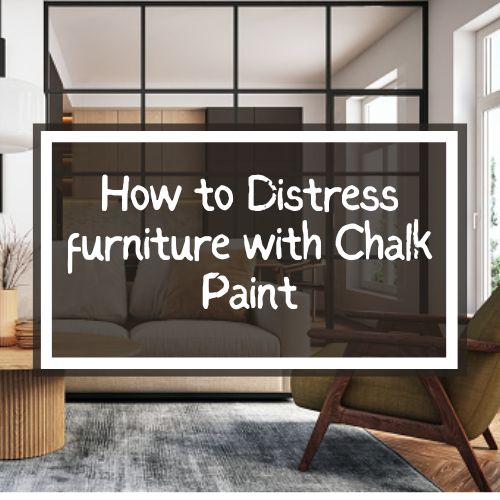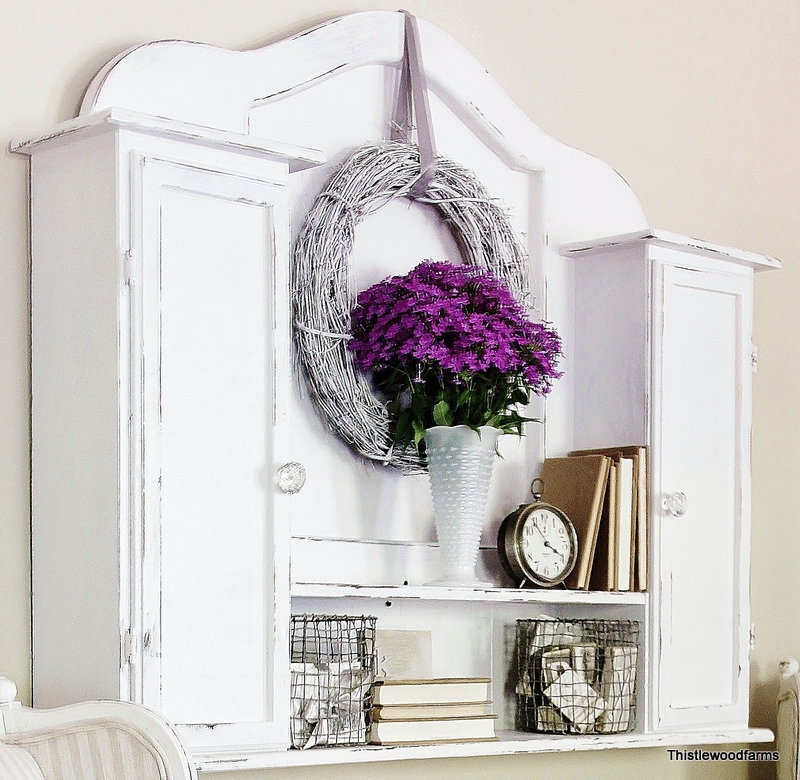Did you know you can use chalk paint on metal surfaces? It’s true! Not only is chalk paint easy to use on anything made of metal, but it’s a fun way to bring new life to patio furniture, plant stands, shelves, and office furniture.
Let’s explore some tips and ideas for painting metal objects with chalk paint.
Does Chalk Paint Work On Metal?
Yes. Chalk paint works beautifully on metal. In fact, there aren’t many surfaces where chalk paint won’t work. It takes a little bit of prep of course, but not nearly as much as painting wood furniture with chalk paint. It’s key to make sure you use the best quality chalk paint to avoid chipping.
What are some of the metal objects that look great painted with chalk paint? Here’s a short list:
- You can use chalk paint to transform metal plant stands to bring some color to a garden or patio.
- Plain metal shelving is usually inexpensive, but not particularly attractive. Paint it with a bright chalk paint shade to transform it into something eye-catching!
- Search yard sales and thrift stores for old metal office furniture. Once upon a time, metal desks and file cabinets were the norm in many offices. Now they’re showing up in thrift stores for reasonable prices. The problem with these nondescript pieces of furniture is that they’re usually found in shades of dull gray or “putty” (should that truly be considered a color?). Chalk paint in fun colors can make boring metal furniture seem like something modern and trendy!
- Upcycle metal cans and containers! You can use chalk paint to decorate clean, empty cans and containers. Painting cans in fun colors is an easy project, and the painted cans are great for organizing craft supplies, pens, or kitchen utensils. This is the perfect project to use up smaller amounts of “leftover” chalk paint from big projects. Painting empty cans is also fun for kids to help with!
- Add a pop of color to your home decor by chalk-painting metal accents such as curtain rods, cabinet handles, and drawer pulls.
- Last but certainly not least, chalk paint is great for painting metal outdoor furniture. Patio tables and chairs can look brand new with a couple coats of chalk paint, and maybe some updated cushions.
How Do You Prepare Metal For Chalk Paint?
Preparing metal objects to be painted with chalk paint is very easy. In fact, it takes less prep work than chalk painting wood furniture. First and foremost you want to make sure whatever you’re going to paint is clean. This should be simple to do with just some soap and water.
The next thing you want to do is look over the piece you are about to paint for chipping paint or rust. If there are significant areas where old paint is chipping, you should go ahead and chip/scrape off as much as you can.
It should come off easily enough using a putty knife, coarse sandpaper, or a bit of steel wool. If there is rust, you should remove any loose pieces the same way.
You can paint right over any chalk paint, or any rust spots, or apply a clear sealant over them if you want to leave the rust showing. A little bit of rust can add character to whatever you’re painting, especially if you are a fan of the distressed aesthetic.
Metal is non-porous, so the paint will sit right on top of it instead of being absorbed into the piece. You don’t have to apply a primer coat, but the first coat of paint should be applied very thinly.
This will act as a base coat. It will look streaky and maybe a little uneven, but it will be okay. By the second or third coat of chalk paint, it will have that beautifully smooth appearance that chalk style paints are known for.
Can I Use Chalk Paint On Metal Outdoor Furniture?
Yes. You can use chalk paint on metal outdoor furniture. Chalk paint is a fabulous way to give new life to metal outdoor furniture!
It’s fairly easy to do, and the results are so satisfying. Here is a quick rundown of the steps for chalk painting outdoor metal furniture:
- First, you want to remove any furniture cushions and tape off anything that you don’t want to paint (glass or tile tabletop, for example). If you’re completely changing the color scheme of your outdoor space, getting new cushions to match your new paint job will make it seem like you have brand new furniture.
- It’s cleaning time! Use soapy water to clean the furniture, then wipe it dry with a lint-free cloth. Remove any big pieces of chipping paint and loose rust. If you want any of the rust to show, now is the time to cover it with a clear coat. It’s not necessary to clear coat the entire piece of furniture; you can just apply enough to cover the rusty areas.
You can use a chalk paint brush-on polycrylic sealant, or a spray clear coat over any rusty spots. Whatever clear coat sealant you choose, look for one with a matte finish. A smooth matte finish will blend in the best with the chalk paint. Allow the clear coat to completely dry before you begin painting.
Of course, if you don’t want any of the rust to show, you can simply clean away any loose rusty bits and then paint your chalk paint right over the top of it. - It’s time to start painting! You can either apply the chalk paint with a brush or spray it on. The key thing to keep in mind is that multiple thin coats of paint are going to give you the best results. Apply the first coat of chalk paint thinly, and keep in mind that this is the base coat. It’s going to look uneven and streaky and to be honest, not that great. It’s okay, though! This first coat of paint is just the base for the next layers of paint to “grab” onto. Each subsequent coat of chalk paint will look better than the one before it!
Be sure to let each layer of paint fully dry before applying the next coat. Since you’re applying nice thin coats of paint, you will probably want three or maybe even four layers before you’re finished. - If you want, the next (optional) step is to add “distressed” areas to your metal furniture. It should be just as easy as distressing wood furniture. It’s as simple as taking some medium sandpaper and gently sanding areas where you want the metal to show through. This looks especially nice on areas with texture or along edges.
- The last step (if you’re not applying a sealant coat) is to peel off any painter’s tape, replace any furniture cushions, and begin enjoying your gorgeous “new” outdoor furniture.
Do You Have To Seal Chalk Paint On Metal?
No, you don’t have to seal chalk paint on metal. It turns out much better if you do seal it though.
There is a lot of disagreement over whether or not you really need to seal chalk paint on metal; especially when it pertains to metal outdoor furniture. A good number of websites will state that sealing isn’t necessary.
My thoughts on this are that it is better to seal the chalk paint than to not do so. Keep in mind that chalk paint is water soluble.
If your painted metal furniture will be outdoors where it will be directly exposed to the elements (especially rain and humidity), eventually that exposure will start to wear at your paint job.
This is especially true if you’ve distressed any areas of your furniture. Visible wear and tear won’t happen quickly, but you might find yourself wanting to touch up the paint after just a year or so.
Both Krylon and Rust-Oleum produce spray-on clear coats with a smooth matte finish. They’re perfect for protecting chalk-painted furniture. Spray the sealant in one or two light coats after the chalk paint is completely dry. Allow the clear coats to completely dry before spraying the next layer, of course.
Does Annie Sloan Chalk Paint Work On Metal?
Annie Sloan chalk paint is the original chalk paint, and it works wonderfully on metal surfaces! It applies easily, and can either be brushed on or used in a paint sprayer. Annie Sloan’s color selections work perfectly with most decorating schemes, too.
There is a video tutorial on Annie Sloan’s website that shows how to paint a metal room radiator with chalk paint. What a great idea!
Can I Use Rust-oleum Chalk Paint On Metal?
Rust-Oleum brand “Chalked” paint is a great choice for painting metal, especially outdoor metal furniture. It is available in either cans of paint that can be applied with a brush, or an easy-to-use spray paint.
There are several color choices available with either type of these paints, and they will both dry to a beautiful chalky matte finish.
Rust-Oleum is a trusted brand that is known for being durable as well as attractive.
Can I Use Krylon Chalk Paint On Metal?
Krylon is another brand of paint known for durability and quality. Their Chalky Finish spray paint is another outstanding option for painting metal furniture. It’s made to stand up to the elements and is available in a wide variety of eye-catching colors.
Some online reviewers have noted that this paint dries to more of a satin finish than a true chalky matte finish. The sheen of a satin finish is very subtle, so anything you paint with this paint will still have a smooth, non-glossy appearance.
I hope this has inspired you to try chalk paint on metal furniture or other objects around your home. It’s a fun and easy way to bring some unique style into your home!
